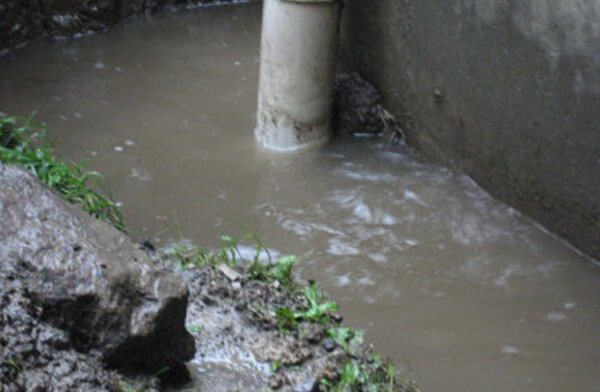Just how to Check If Your Home Has a Concealed Leak
Just how to Check If Your Home Has a Concealed Leak
Blog Article
We have found the article about Top leak detection hacks listed below on the internet and felt it made sense to relate it with you in this article.

Early discovery of leaking water lines can mitigate a possible disaster. Some tiny water leakages might not be noticeable.
1. Check Out the Water Meter
Checking it is a proven means that helps you uncover leakages. If it moves, that suggests a fast-moving leak. This suggests you may have a sluggish leakage that can also be underground.
2. Inspect Water Usage
Assess your water bills as well as track your water intake. As the one paying it, you ought to notice if there are any kind of inconsistencies. If you find sudden changes, regardless of your consumption being the same, it suggests that you have leaks in your plumbing system. Keep in mind, your water costs should drop under the very same variety every month. A sudden spike in your costs shows a fast-moving leak.
Meanwhile, a steady boost monthly, despite having the exact same habits, shows you have a slow leakage that's additionally gradually intensifying. Call a plumber to completely inspect your home, specifically if you feel a cozy location on your floor with piping underneath.
3. Do a Food Coloring Test
When it pertains to water consumption, 30% comes from bathrooms. Examination to see if they are running effectively. Decline flecks of food shade in the storage tank and wait 10 mins. There's a leak between the tank and also dish if the shade in some way infiltrates your bowl during that time without flushing.
4. Asses Outside Lines
Don't fail to remember to inspect your outdoor water lines also. Needs to water seep out of the link, you have a loosened rubber gasket. One tiny leakage can squander bunches of water and spike your water costs.
5. Evaluate the circumstance and check
Homeowners need to make it a routine to examine under the sink counters and also even inside closets for any bad odor or mold growth. These 2 warnings suggest a leakage so timely focus is required. Doing regular examinations, also bi-annually, can save you from a significant problem.
If you know your house is already old, maintain a careful eye on your heating units, pipes, pipelines and so on. Check for discolorations as well as weakening as most devices and pipes have a life span. They will also normally degrade as a result of tear as well as wear. If you suspect dripping water lines in your plumbing system, do not await it to rise. Call a specialist plumber right now so you don't end up with a terrible mess in your house.
Early detection of leaking water lines can mitigate a prospective disaster. Some little water leaks may not be noticeable. Checking it is a surefire way that assists you uncover leaks. One little leakage can waste loads of water and surge your water expense.
If you believe leaking water lines in your plumbing system, do not wait for it to intensify.
How to Know If Your Home Has a Hidden Leak
Water Meter Reveals Inexplicable Water Usage
If you’d like to test whether or not there’s a leak somewhere in your home, you can do this using your water meter. Here is how to conduct the test:
Don’t use any water in your home for at least 30 minutes; this also means not turning on faucets or water-using appliances.
Go outside, and check your water meter for activity.
If your water meter shows that there was activity, even though no one was using any water, this proves that there is a leak in your home.Visible Mold or Mildew Growth
Leaks behind walls create moist, dark environments that allow mold and mildew to grow and thrive. Eventually, you might see mold growth forming on the wall closest to a hidden leak.
If mold is growing in an area that receives a high amount of moisture, such as a bathroom, it may simply be an indication that better ventilation is needed. However, if you see mold growth on a wall or the ceiling in an area where you would not expect, you probably have a hidden leak.
Musty, Mildew Odor
Sometimes you might not be able to see the mold or mildew that is growing as a result of a leak. However, the smell can give the problem away just as easily. If you catch a whiff of something musty, there’s a good chance that old water is collecting somewhere in your home that you can’t see.
Stained/Warped Walls, Ceilings, or Floors
When your home soaks up water, a variety of red flags can become visible, including ceiling stains, bubbling drywall, warped walls, and sagging floors. While these issues can be caused by excess humidity, they can also be signs that a pipe or plumbing connection has started leaking behind your walls.
Inexplicably High Water Bill
After a while, you get a general sense for what your water bill should be. If you own a pool or sprinkler system, your bill will tend to be higher during summer. However, if you receive a water bill that seems especially high, and you can’t figure out what caused it, then you may have a hidden leak somewhere that’s increasing your bill.
https://www.plumbingjoint.com/blog/2019/july/how-to-know-if-your-home-has-a-hidden-leak/
.jpg)
Hopefully you enjoyed reading our section on Locating water leaks. Many thanks for taking the time to read our article post. Are you aware of anybody else who is intrigued by the subject? Please feel free to share it. I appreciate reading our article about Detecting hidden plumbing leaks.
Report this page